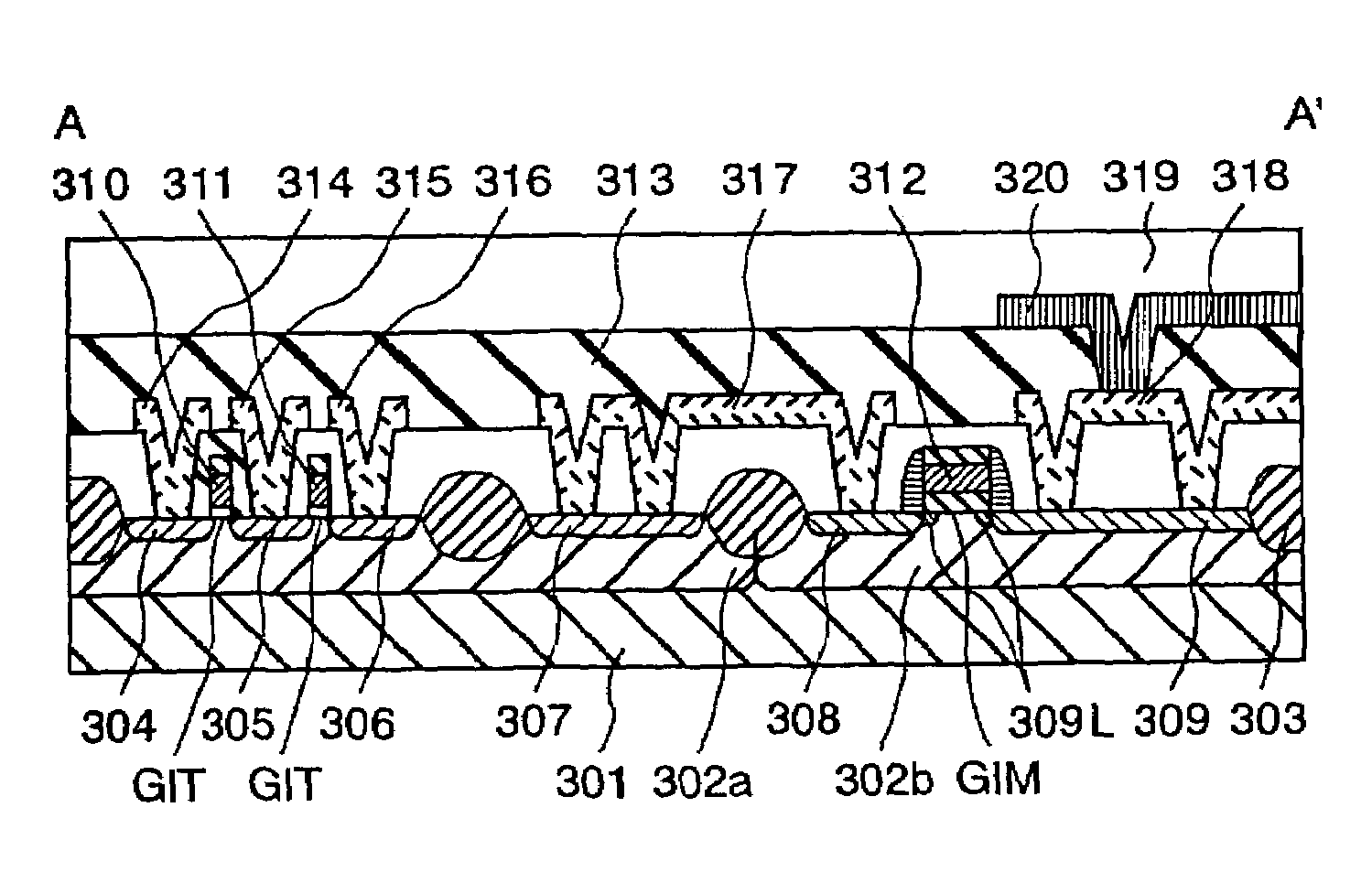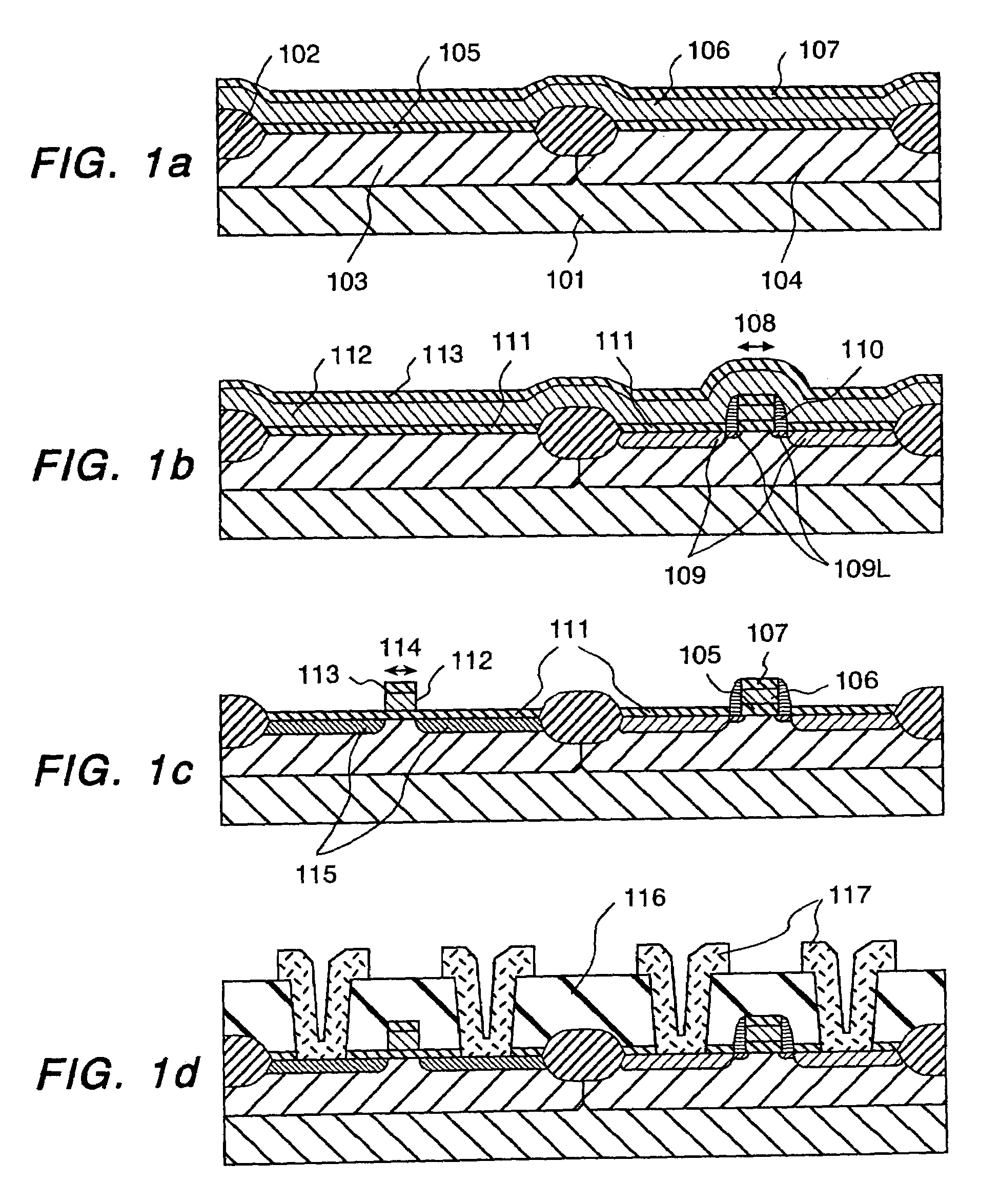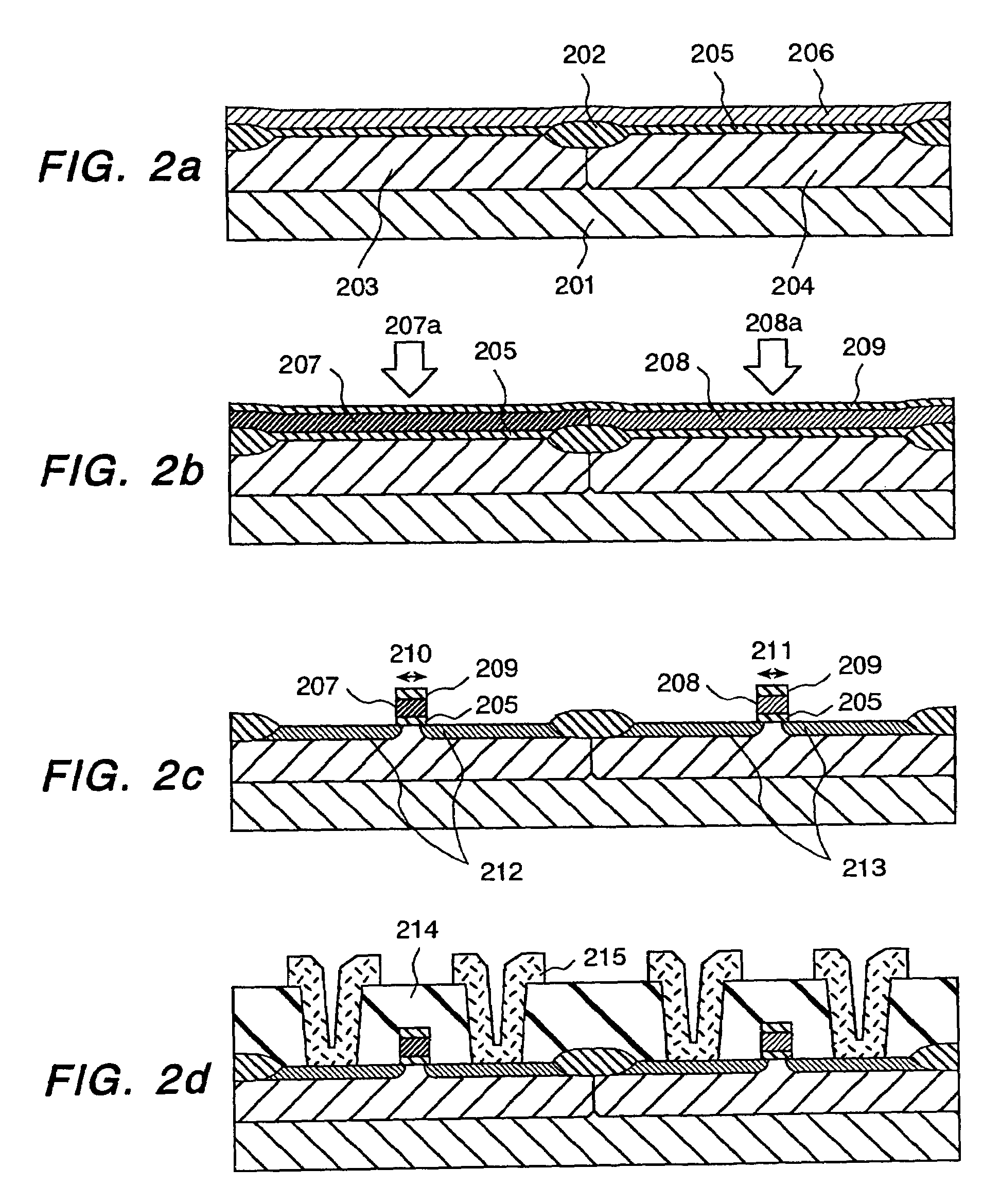Method of forming a CMOS structure having gate insulation films of different thicknesses
a technology of gate insulation and cmos, which is applied in the direction of semiconductor devices, digital storage, instruments, etc., can solve the problems of increasing the power dissipation of mos transistors during standby periods, increasing the leakage current (tunnel leakage current), etc., to reduce the power dissipation significantly, less leakage current magnitude, and eliminate adverse influence or affection
- Summary
- Abstract
- Description
- Claims
- Application Information
AI Technical Summary
Benefits of technology
Problems solved by technology
Method used
Image
Examples
first embodiment
[0088]The first embodiment will now be explained in conjunction with FIG. 1. This embodiment is drawn to the manufacture of an exemplary IC device attaining copresence of a tunnel current available MOS transistor and a tunnel current depleted MOS transistor without any substantive flow of tunnel current therein on the same chip substrate by differing the thickness of gate insulation film between them. While this embodiment is intended to fabricate such two different kinds of gate insulation films by use of both p-type MOS transistors and n-type MOS transistors, cross-sections presented in FIG. 1 assume use of p-type MOS transistors only for purposes of reducing complexity of illustration. An n-type silicon substrate 101 is prepared having a top surface on which an element isolation dielectric region 102 made of a thermal oxide film of 300 nm thick is formed. In the substrate surface, n-type impurity-doped layers 103 and 104 are formed. These impurity layers 103, 104 are 1×1017 atoms...
second embodiment
[0106]A second embodiment is shown in FIG. 2, which is directed to one exemplary manufacturing method of an IC chip having on the same substrate different kinds of MOS transistors: tunnel-current available MOS transistors permitting flow of a tunnel current therein resulting from a change of impurity concentration at gate and source portions, and tunnel-current absent MOS transistors permitting no substantive tunnel current flow therein. In this embodiment the cross-sections of p-type MOS transistors alone are illustrated in FIG. 2 in the same manner as that in the previous embodiment (FIG. 1). An n-type silicon substrate 201 is prepared on which an element isolation dielectric region 202, an n-type impurity layer 203 and an n-type impurity layer 204 are formed as shown. Here the n-type layer 203 is devoted to provision of a well region of transistors for use in constituting a main circuit whereas n-type layer 204 is for a well of power-supply intercept MOS transistors which selecti...
third embodiment
[0111]A third embodiment will now be described with reference to FIGS. 3 and 4. FIGS. 3 and 4 are diagrams each showing one practical configuration of a semiconductor integrated circuit device embodying the invention, wherein FIG. 3 is a layout depiction of this embodiment whereas FIG. 4 is a cross-sectional view of the layout taken along line A-A′ of FIG. 3. The IC device is an example having a series combination of two NAND gate circuits.
[0112]In FIG. 3, MOS transistors MP and MN are those for power supply intercept (for use with a control circuit), and measure 10 nm in gate insulation film thickness although these remain operable with 5-nm gate insulation film thickness. MOS transistors TP and PN are for use with a logic circuit (main circuit), and are 3.5 nm in gate insulation film thickness. In this way, this embodiment employs two kinds of MOS transistors with different gate insulation film thickness values. Here, the gate length LM of gate insulation film thickness-increased ...
PUM
 Login to View More
Login to View More Abstract
Description
Claims
Application Information
 Login to View More
Login to View More - R&D
- Intellectual Property
- Life Sciences
- Materials
- Tech Scout
- Unparalleled Data Quality
- Higher Quality Content
- 60% Fewer Hallucinations
Browse by: Latest US Patents, China's latest patents, Technical Efficacy Thesaurus, Application Domain, Technology Topic, Popular Technical Reports.
© 2025 PatSnap. All rights reserved.Legal|Privacy policy|Modern Slavery Act Transparency Statement|Sitemap|About US| Contact US: help@patsnap.com



